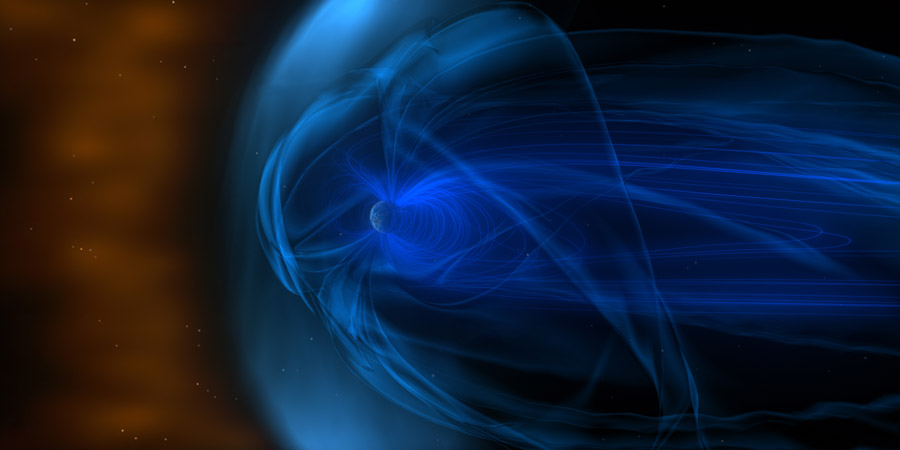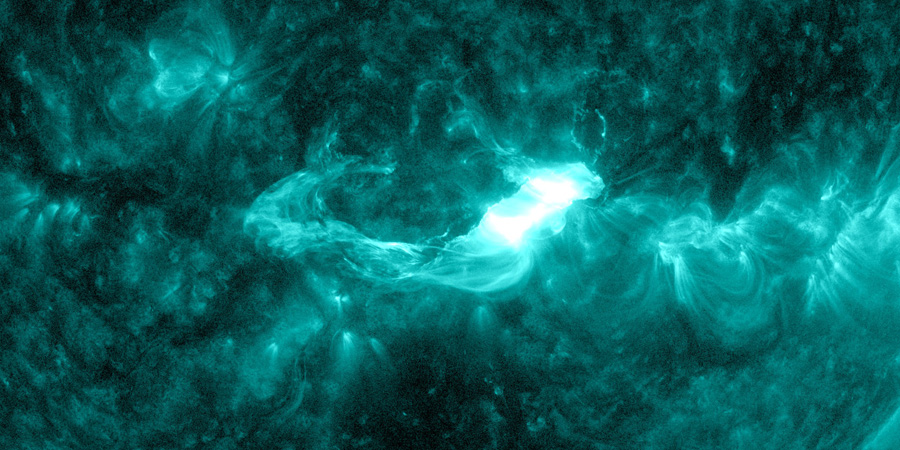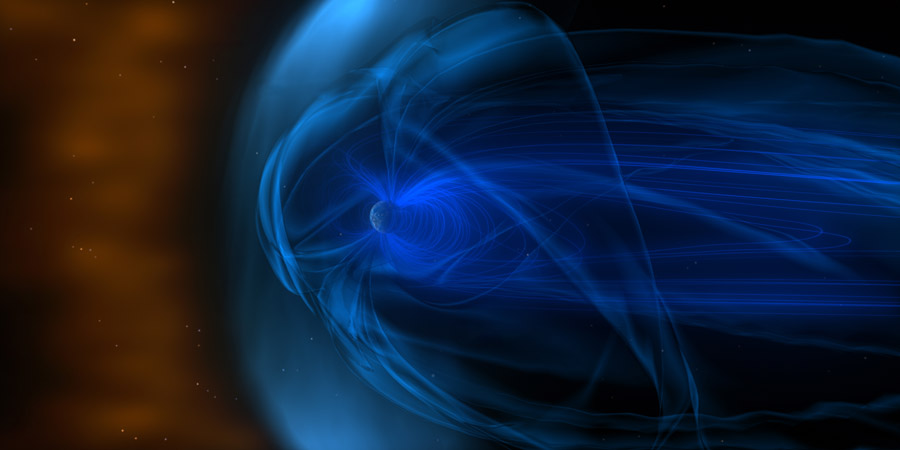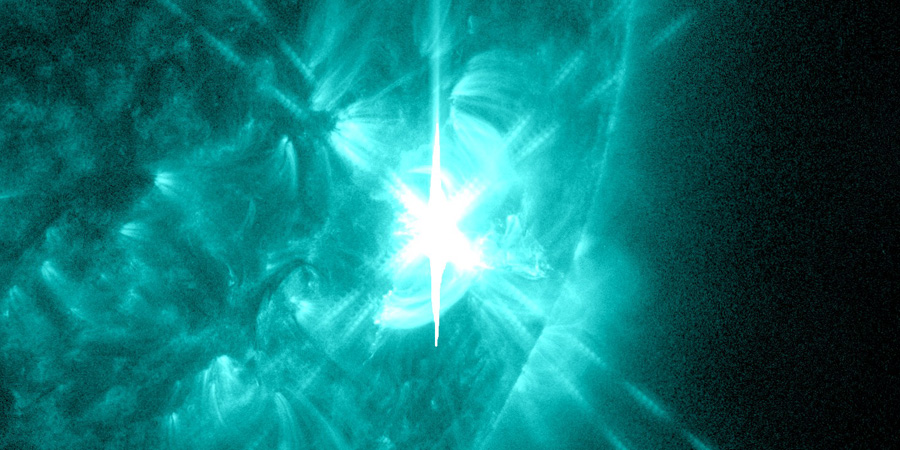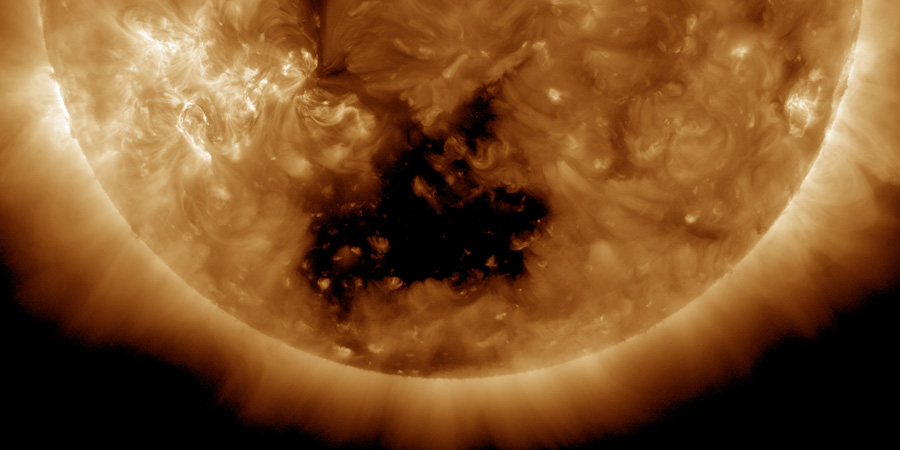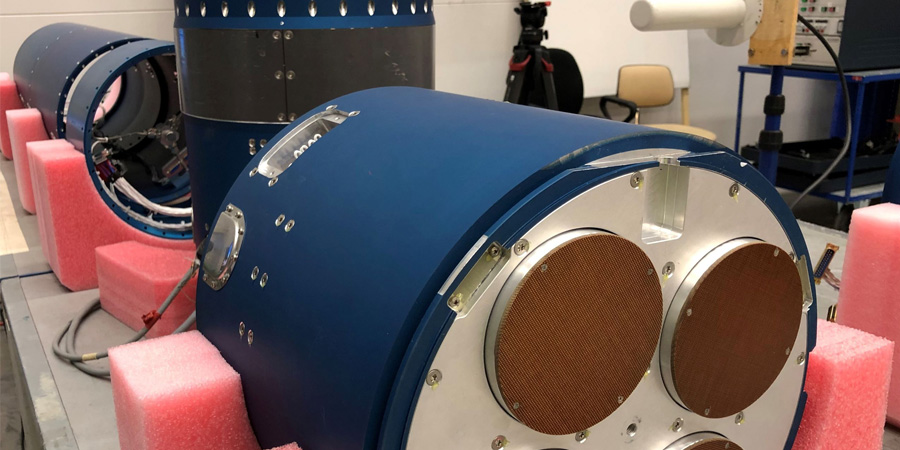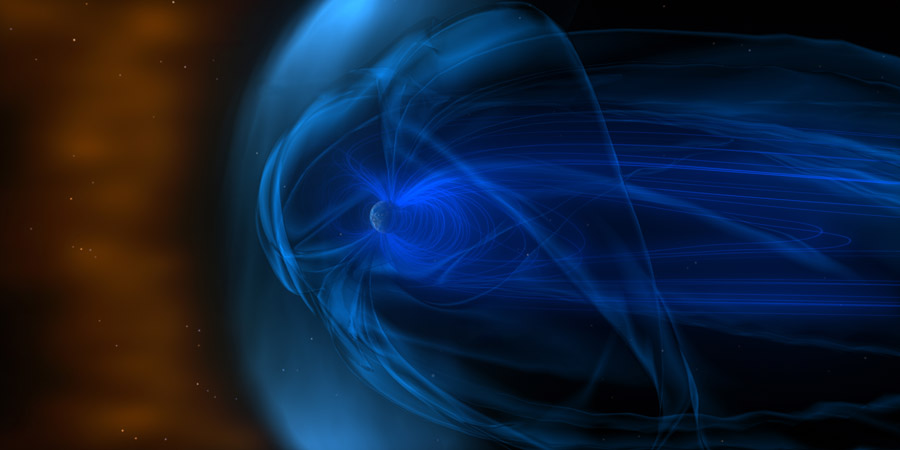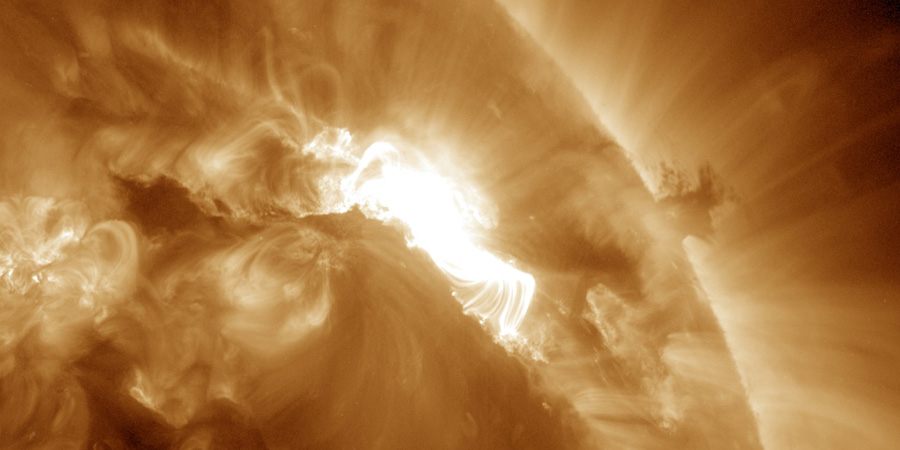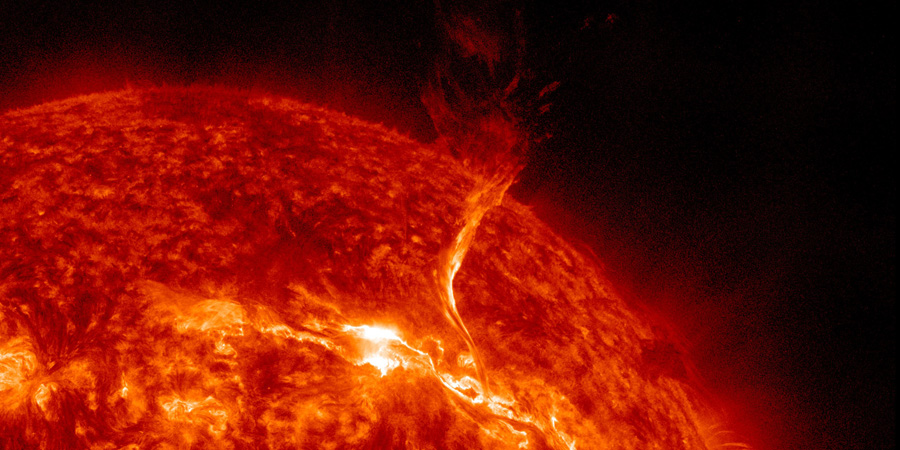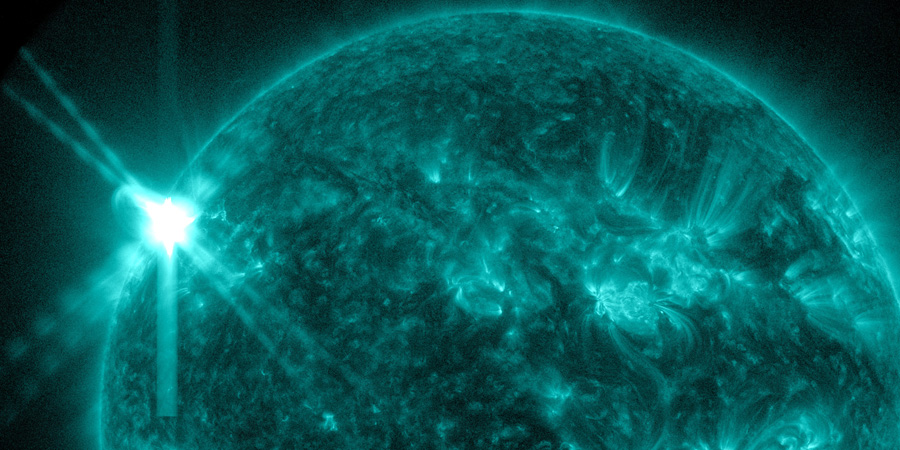Latest news updates Subscribe
Coronal mass ejection impact
domenica, d.C. aprile PM 17:16 UTC
The coronal mass ejection from the M1.7 solar flare that took place two days ago has arrived at the DSCOVR satellite. We admit... this coronal mass ejection arrived earlier than we expected!
M1.7 solar flare, full halo CME
sabato, d.C. aprile PM 12:55 UTC
An M1.7 solar flare took place yesterday peaking at 18:12 UTC. The eruption was combined with what looks like a filament eruption around sunspot region 3283 which is located near the center of the earth-facing solar disk.
Coronal mass ejection arrival
martedì, d.C. aprile PM 15:34 UTC
A shock in the solar wind was detected today around 13:20 UTC. This could very well be the arrival of a coronal mass ejection that was launched by a filament eruption on 15 April.
X1.2 solar flare
mercoledì, d.C. marzo AM 09:09 UTC
An impulsive solar flare peaking at the X1.2-class (R3-strong) took place today with the solar flare peaking at 02:33 UTC. Sunspot region 3256 (beta-gamma) which is close to the west limb is the source of this eruption. This region is currently located near the south-west solar limb.
Coronal hole faces Earth, G2 geomagnetic storm watch
mercoledì, d.C. marzo PM 17:18 UTC
The NOAA SWPC has issued a moderate G2 geomagnetic storm watch for this Friday (24 March) due to the anticipated arrival of a high speed solar wind stream coming from a southern hemisphere coronal hole.
G1 watch, far side CME, BROR rocket campaign
lunedì, d.C. marzo PM 18:44 UTC
Quite the surprise this morning as proton levels at the near Earth environment suddenly started to rise this morning and even crossed the minor S1 solar radiation storm level. This was all the result of a major far side coronal mass ejection which you can see in the animation below which we posted on our Twitter account. Be sure to follow us and like the post! Magnetic field lines from the Parker Spiral managed to send some protons our way causing us to cross the minor S1 solar radiation storm level causing minor disturbances in HF radio communications at high latitudes. While impressive, the plasma cloud is of course aimed away from our planet and no further effects should be expected from it.
Coronal mass ejection arrival
domenica, d.C. febbraio PM 19:43 UTC
A coronal mass ejection has arrived at our planet. This is likely the arrival of the coronal mass ejection that was launched during a filament eruption in combination with an M3 solar flare two days ago.
M6.3 flare, double CME impact expected
domenica, d.C. febbraio AM 11:16 UTC
Sunspot region 3229 does it again this time with an M6.2 solar flare that peaked yesterday at 19:44 UTC. This long duration solar flare was again highly eruptive just like the M3.7 solar flare. A minor S1 solar radiation storm followed as a result of this eruption which has minor impacts on HF radio communications at high latitudes.
M3.7 solar flare, Earth-directed CME
sabato, d.C. febbraio AM 10:40 UTC
A gorgeous filament eruption around sunspot region 3229 yesterday resulted in a M3.7 solar flare (R1-minor) that peaked at 20:30 UTC.
X2.2 solar flare with earth-directed CME
sabato, d.C. febbraio PM 12:55 UTC
A major long duration X2.28 solar flare (R3-strong) took place yesterday and reached its peak at 20:17 UTC. This is the strongest solar flare of Solar Cycle 25 thus far and we can thank sunspot region 3229 for that. This sunspot region is currently close to the north-east limb and the solar flare was highly eruptive. Despite the region's location near the limb, we can not rule out a glancing blow from this plasma cloud.
Ultime notizie
Ultimi messaggi dal forum
Supporta SpaceWeatherLive.com!
Molte persone vengono su SpaceWeatherLive per seguire l'attività del Sole o sapere se ci sia la possibilità di vedere l'aurora, ma a maggior traffico corrispondono costi maggiori. Considerate una donazione se vi piace SpaceWeatherLive così che possiamo mantenere online il sito web!

Notizie sul meteo spaziale
| Ultimo brillamento X | 2024/05/12 | X1.02 |
| Ultimo brillamento M | 2024/05/13 | M3.6 |
| Ultima tempesta geomagnetica | 2024/05/12 | Kp7 (G3) |
| Giorni senza macchie | |
|---|---|
| Ultimo giorno senza macchie | 2022/06/08 |
| Media mensile Numero di Macchie Solari | |
|---|---|
| aprile 2024 | 136.5 +31.6 |
| maggio 2024 | 144.3 +7.8 |
| Last 30 days | 175.2 +82.9 |
